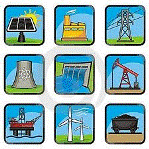Department of Agricultural Economics: Undergraduate Research

Op-Eds from ENSC230 Energy and the Environment: Economics and Policies
Date of this Version
Fall 12-12-2019
Document Type
Editorial
Citation
Op-ed from ENSC 230. Energy and the Environment: Economics and Policy, University of Nebraska-Lincoln, Department of Agricultural Economics, fall 2019
Abstract
The nuclear power plant failures at Three Mile Island and Chernobyl in the late 1970s and 1980s split Americans into two passionate camps. For some, nuclear plants posed serious threats to both environmental and national security, and, for others, nuclear energy remained the most viable path to clean, reliable power in the United States. But following the fervent debates of the late 20th century, the national conversation around nuclear power stagnated. A few ardent advocates and opponents notwithstanding, nuclear power left the public eye. Popular energy debates—especially among young people—now center around flashier topics like the Green New Deal, electric vehicles, and Greta Thunberg. In light of the collective avoidance of nuclear power, support in the U.S. recently reached an all-time low—although the slight majority opposition fails to tell the entire story. Rather than carefully researching the pros and cons of new advancements in nuclear power, many Americans maintain decades-old opinions, parrot the viewpoints of media personalities, or avoid thinking about nuclear energy entirely. While brushing a topic as difficult as nuclear power under the rug seems the most convenient option, one problem remains—Americans can’t afford to abandon nuclear power. First, let’s state the obvious: Anthropogenic contributions to climate change pose serious threats to the planet, and carbon dioxide released into the atmosphere plays a sizeable role in humanity’s impact on the environment. Crucially, though, nuclear plants generate vast amounts of power without directly emitting CO2. Furthermore, nuclear energy’s current technological capabilities—unlike other renewable technologies—can provide reliable baseload electricity in nearly every corner of the world. Yet the current state of nuclear power is what causes such angst among nuclear skeptics. Most nuclear plants came online between 1970 and 1990, and the infamous disasters of Three Mile Island, Chernobyl, and Fukushima originated from freak failures in dated technology. Additionally, traditional nuclear plants take billions of dollars and many years to build, all while creating the problem of non-disposable, highly radioactive waste. The perceived health risks of nuclear power, though, falter under further examination. In fact, the use of nuclear power over fossil fuels such as coal or natural gas prevented an estimated 1.8 million net deaths between 1971-2009. As for cost and waste-related worries, traditional nuclear plants do come with high capital costs and create radioactive waste, but the levelized costs of nuclear energy—the minimum price of electricity for the project to break even—tell a different story. In 2020, the levelized cost of nuclear plants coming online was $95.2/MWh, comparable to conventional coal ($95.1/MWh) and below conventional combustion turbine natural gas-fired plants ($141.5/MWh). Additionally, new technologies promise to change the landscape of nuclear power. Companies like NuScale Power, for example, propose a small, modular reactor with a simplified design capable of shipment by truck, rail, or barge and projected to be commercially available by 2025. This modular reactor greatly reduces construction and operating costs, consequently emerging as a viable option for clean, baseload power generation in smaller communities. Another company, TerraPower, has designed a nuclear reactor capable of utilizing fuel made from depleted uranium, the byproduct of traditional nuclear plants. Commercial use of this technology would reduce nuclear proliferation concerns, lower costs, and protect the environment by eliminating existing nuclear waste. Countless additional examples of advanced nuclear technologies exist, and it is in our best interests—environmentally and financially—to give them serious consideration. Even if modern nuclear plants fail to act as a panacea to the world’s energy problems, they may prove beneficial in regions lacking the necessary conditions to survive off solar, hydro, and wind power alone—at least until large scale storage and transportation of renewable energy becomes viable. Simply put, advanced nuclear power’s potential justifies significant investment in further research. Considering the climate-related challenges before us, to outwardly dismiss such an impactful technology would be foolish.
Included in
Environmental Indicators and Impact Assessment Commons, Natural Resources and Conservation Commons, Oil, Gas, and Energy Commons


Comments
Copyright 2019, Daniel Gertner. Used by permission